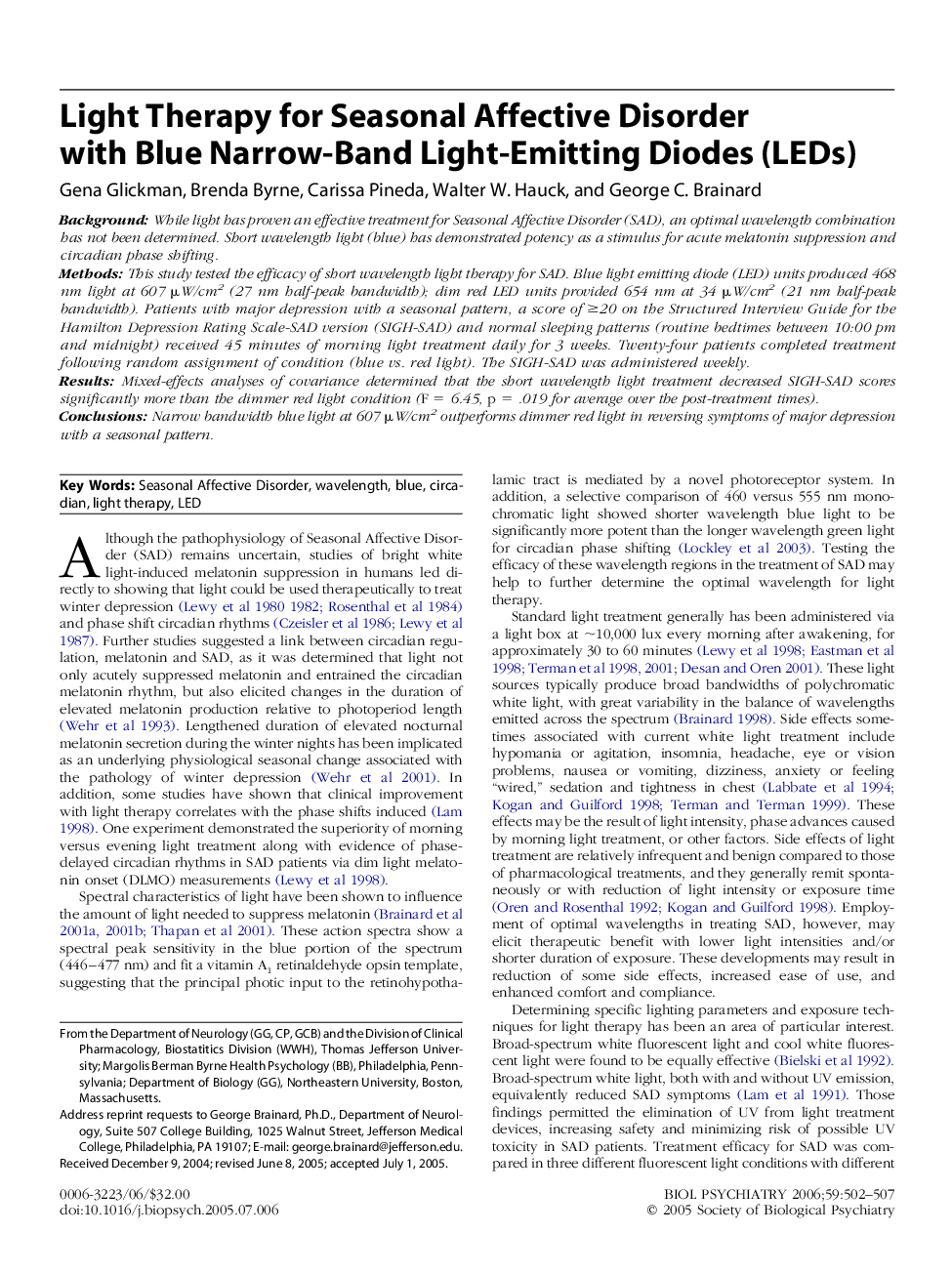| Article ID | Journal | Published Year | Pages | File Type |
|---|---|---|---|---|
| 4181339 | Biological Psychiatry | 2006 | 6 Pages |
BackgroundWhile light has proven an effective treatment for Seasonal Affective Disorder (SAD), an optimal wavelength combination has not been determined. Short wavelength light (blue) has demonstrated potency as a stimulus for acute melatonin suppression and circadian phase shifting.MethodsThis study tested the efficacy of short wavelength light therapy for SAD. Blue light emitting diode (LED) units produced 468 nm light at 607 μW/cm2 (27 nm half-peak bandwidth); dim red LED units provided 654 nm at 34 μW/cm2 (21 nm half-peak bandwidth). Patients with major depression with a seasonal pattern, a score of ≥20 on the Structured Interview Guide for the Hamilton Depression Rating Scale-SAD version (SIGH-SAD) and normal sleeping patterns (routine bedtimes between 10:00 pm and midnight) received 45 minutes of morning light treatment daily for 3 weeks. Twenty-four patients completed treatment following random assignment of condition (blue vs. red light). The SIGH-SAD was administered weekly.ResultsMixed-effects analyses of covariance determined that the short wavelength light treatment decreased SIGH-SAD scores significantly more than the dimmer red light condition (F = 6.45, p = .019 for average over the post-treatment times).ConclusionsNarrow bandwidth blue light at 607 μW/cm2 outperforms dimmer red light in reversing symptoms of major depression with a seasonal pattern.
